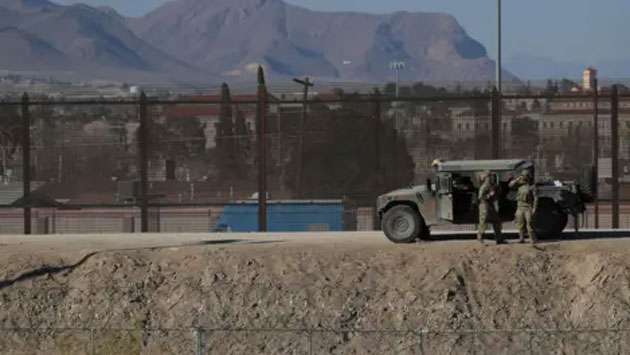Trump administration officials are considering deploying as many as 10,000 soldiers to the U.S.-Mexico border and detaining them as they plan a dramatic crackdown on illegal immigration using Defense Department camps, according to an internal government memo obtained by CBS News.
In an executive order signed by Mr. Trump after taking office on Monday, he declared a national emergency along the southern border and directed the Defense Department to provide troops and resources “to support the Secretary of Homeland Security’s efforts to regain full operational control” of the border. He also directed the military to help build border barriers to keep out migrants.
On Wednesday, White House press secretary Caroline Levitt told reporters that the president had signed another executive order to deploy 1,500 troops to the southern border, adding to the 2,500 soldiers already stationed there under federal orders. Texas and other states have also deployed National Guard soldiers to the border in recent years, including fortifying it with razor wire.
But a memo from the Departments of Homeland Security and Customs and Border Protection released on January 21 shows a plan to send “~10,000 troops” to support the agency’s operations at the southern border. According to the document, the Trump administration has made an “unrestricted request” to the Pentagon to increase resources and personnel to support CBP in technology and infrastructure.
The memo also says the Defense Department could convert its camps into “detention facilities,” which could help CBP detain immigrants who have entered the United States illegally.
In addition, the memo shows that the Trump administration plans to dramatically expand the detention capacity of Immigration and Customs Enforcement agencies, which are expected to be the focus of Mr. Trump’s promised mass deportations.
According to the document, ICE officials need 14 new detention centers that can hold up to 1,000 immigrants and four more that can hold up to 10,000 immigration detainees.
In a discussion with reporters, a senior U.S. military official said the deployment of 1,500 troops would include sending 1,000 Army officers and 500 Marines, as well as helicopters, to the California and Texas borders. The military would not be involved in law enforcement, the official said, because federal law generally prohibits the use of the military for civilian law enforcement. Instead, they would be tasked with helping CBP crack down on illegal crossings and erect border barriers, the official said.
The Defense Department also announced that CBP is providing “military flights to assist” in the deportation of more than 5,000 migrants detained at the U.S.-Mexico border. The Department of Homeland Security is providing the flights for law enforcement, officials said.
Mr. Trump’s plans to vastly expand the role of the U.S. military in border enforcement — historically limited to operational and administrative duties — are part of a broader campaign to seal off the U.S. border to migrants and refugees.
According to CBP officials and internal documents, the Trump administration has ordered U.S. immigration agents along the borders with Mexico and Canada to quickly and summarily deport migrants who cross the country illegally, denying them the opportunity to claim asylum.
The order followed an unprecedented order by Mr. Trump to block entry into the country, arguing that illegal immigrants were “invading” the United States and were a threat to public health and national security.
Mr. Trump said he had the authority to take strong action through a law known as 212(f), which gives presidents the power to ban the entry of foreigners deemed “detrimental” to the powers of the U.S. Constitution and U.S. interests.
Although Mr. Trump made immigration a key issue during the election campaign, his administration inherited a relatively calm southern border, where illegal crossings were at their lowest level in four years. Illegal crossings into the United States in 2024 fell from the highest levels on record in the previous three years, thanks to a Mexican crackdown on migrants. They fell further after the Biden administration imposed restrictions on asylum last June.



